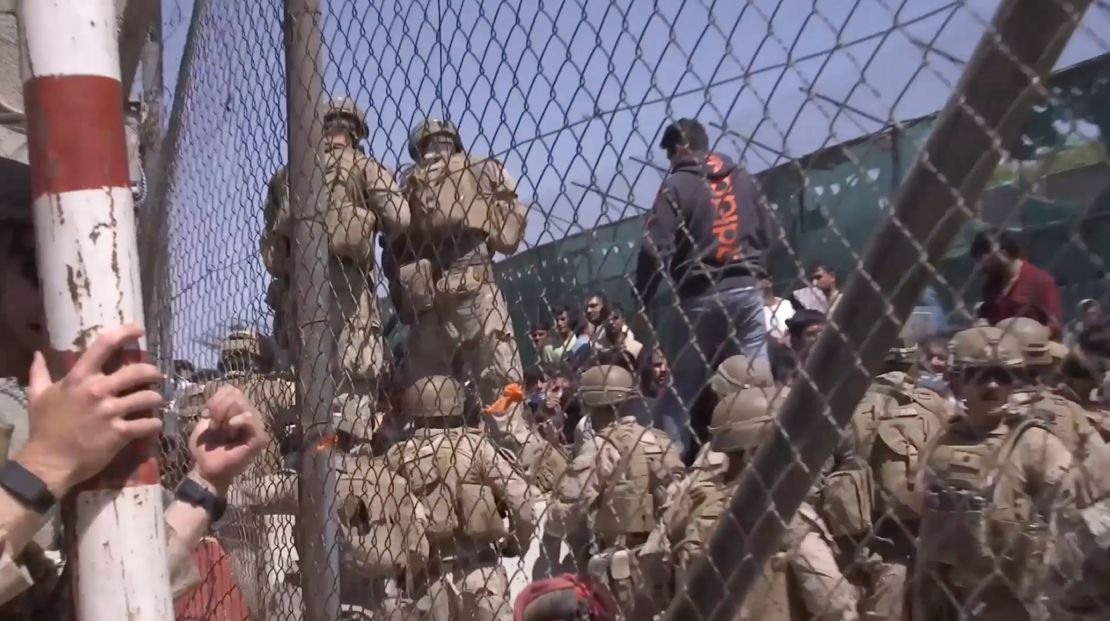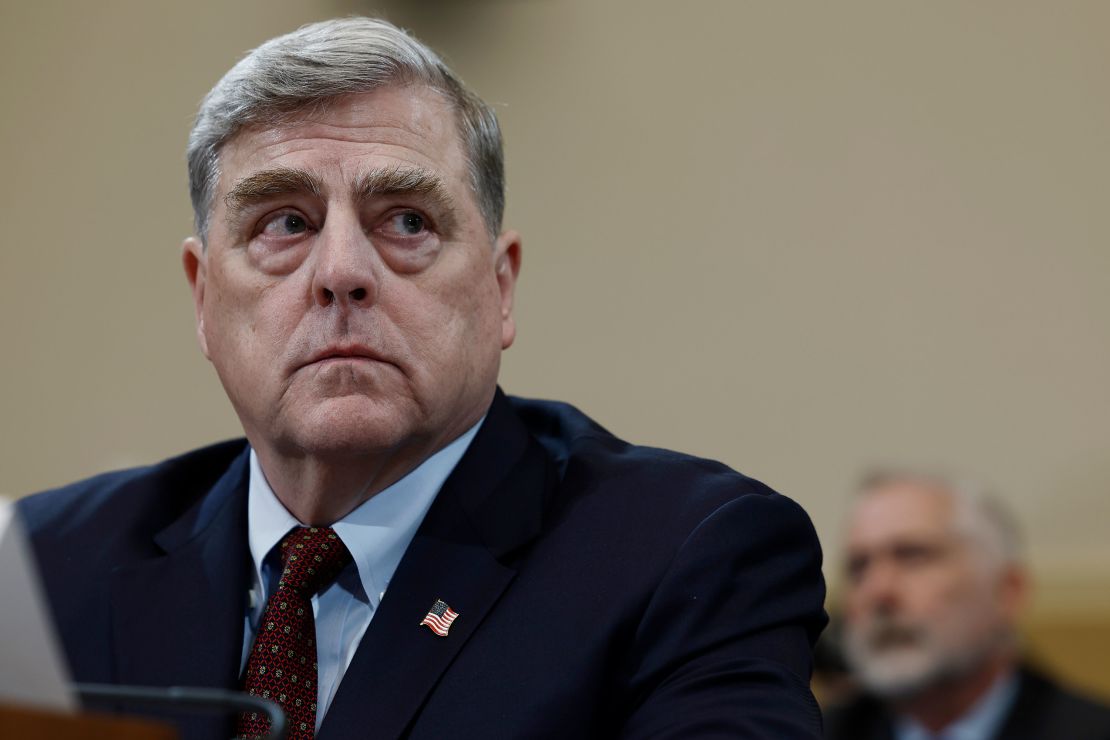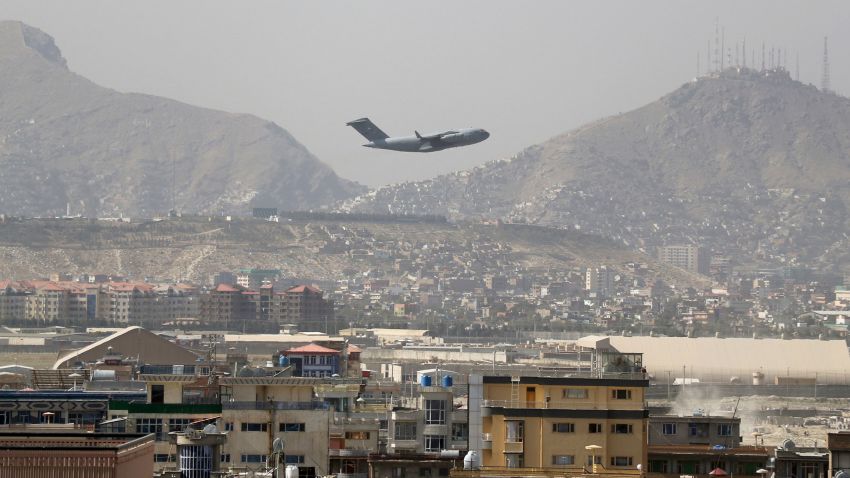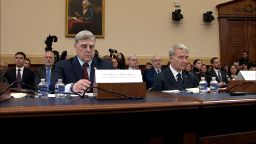Hours of closed-door testimony from three top State Department officials shed new light on the “unprecedented” situation in the final days of the US presence in Afghanistan as the officials were rushed to the country with virtually no time to prepare and no established emergency evacuation plan in place when they arrived.
The three officials, John Bass, Jim DeHart and Jayne Howell, were all plucked from unrelated assignments and rushed into Afghanistan in the hours after Kabul fell to the Taliban due to their extensive experience in Afghanistan.
The transcripts of their interviews with the House Foreign Affairs Committee, obtained exclusively by CNN, are the latest tranche of more than a dozen interviews conducted by the committee as a key part of Republican Chairman Michael McCaul’s ongoing investigation into the 2021 evacuation that involved the deaths of 13 US service members.
McCaul is planning to put out a report later this year that includes overall takeaways from the interviews, as well as State Department notes the House Foreign Affairs Committee has received from the agency’s own review of the withdrawal. Biden administration officials expect that the report will be timed with a political motive: to bring the Afghanistan withdrawal back to the fore during the heat of the presidential election.
The new details paint a picture of the chaos outside the Kabul airport and the ad-hoc nature of the evacuation, something that top US military generals suggested could have been mitigated if the State Department had called sooner for a “noncombatant evacuation operation” – known as a NEO – for remaining US citizens in Afghanistan.
“It is my assessment that that decision came too late,” Gen. Mark Milley, the now-retired Joint Chiefs chairman, said at the House Foreign Affairs Committee hearing last month. The State Department has continued to publicly defend its decision making around the NEO as well as the ending of the war.
A State Department spokesperson, asked about the interviews, said that “each of the current and former Department officials interviewed by the Committee worked alongside thousands of other personnel from the Department and the military to evacuate nearly 124,000 U.S. citizens, Afghan allies, and international partners, a massive and extremely challenging military, diplomatic, and humanitarian undertaking conducted under extraordinary circumstances.”
“It was the right decision to end the 20-year war in Afghanistan, the longest war in American history, and bring our troops home,” the State Department spokesperson told CNN Wednesday. “That decision has allowed the U.S. to better address the foreign policy challenges of the present and future, including the ongoing conflicts in Ukraine and the Middle East.”
No working evacuation plan in place
All three of the officials rushed to Kabul in the days surrounding the Taliban’s seizure of the capital city, and dove into creating systems on the fly alongside the US military and with constantly-changing input on the ground and coming from DC.
Though officials who had worked at the embassy leading up to the evacuation told the committee investigators in separate interviews that planning for a NEO began in April or May, the officials who arrived in August said that no such clearly articulated plan served as their guide.
“I cannot emphasize enough to you that minute to minute, what was happening was changing,” Howell said in her July 2023 interview.
Every single US embassy around the world is required to have a NEO that can be used in the case of emergency evacuation situations, but the officials explained that the dangerous and over-crowded Kabul airport environment would have rendered any preformed plans ineffective and instead forced them to constantly adapt.
DeHart said they had to “create from scratch tactical operations that would get our priority people into the airport.” He added: “we were roughly as effective as we could be under the circumstances.”
Bass, who served as the top State Department coordinator on the evacuation efforts on the ground, echoed those sentiments.
“We were already in the midst of executing an evacuation that substantially exceeded I think the scope and scale of what had been contemplated,” explained Bass.

There was no time for them to prepare before landing in Afghanistan. Bass was serving at the Foreign Service Institute when he said he was asked to take up the role by then-Deputy Secretary of State Wendy Sherman, and he departed eight to ten hours later. DeHart, who worked as Bass’ deputy, left from his posting as coordinator for arctic affairs in Washington. Howell, who served as senior consular officer on the ground, traveled to Afghanistan directly from her posting in Turkey.
The officials had virtually no briefings ahead of their arrival. Bass said in his January 2024 testimony that “given how fluid the situation was on the ground, I’m not sure that additional preparation time would have yielded a significant benefit.”
But the weighty challenge was overwhelming for the consular officers, who vetted the people seeking to leave on US flights. They faced constantly changing directions in terms of who could be evacuated, and how many people could be evacuated, which led to an air of frustration.
“On a human level, that’s quite frustrating… it was required because of the circumstances,” said DeHart as he discussed the constantly changing guidance that consular officer would receive. In some cases, the new guidance meant that someone they had just turned away could have been let in.
Taliban obstacles
The efforts to get people into the airport compound faced countless setbacks, many of which were caused by the Taliban, which maintained security perimeters throughout the city and violently stopped people from reaching the airport.
“The situation was evolving constantly,” Howell said.
“It was the Taliban. It was what will the Taliban allow? What will they let people move through and how will they do it?” she said.
Howell noted that “it was very rare that all the gates (into the airport) were open” because there was so much chaos and violence as people desperately tried to get into the airport. The military would close them when they were deemed unsafe to operate at, Howell explained.
Howell described Abbey Gate, the site of the deadly ISIS-K bombing on August 26 that killed 13 American servicemembers, as “always the one with the most violence, the most issues with the Taliban, the most issues with crowd control.”
Because of the danger and chaos around the big gates into the airport, US officials tried to find other ways to get Americans and vulnerable Afghans in. Those efforts also were met with challenges from the Taliban.
Howell spoke of one incident where she had been briefed that the Taliban agreed to “admit Americans in a controlled fashion” into a passenger terminal, only for them to do nothing “they had agreed to do, and tens of thousands of people overran the passenger terminal.”
Howell said that after having worked on Afghanistan for 19 years it was “a little bit wild to tell people that you can trust the Taliban,” but explained that it was a necessity given the circumstances.
State Department criticism from Pentagon
On the whole, accusations about who was responsible for the chaotic final weeks have fallen largely along party lines, with Republicans pointing fingers at the Biden administration and Democrats casting blame on the Trump administration for the deal that set the US withdrawal into motion.

And when focusing on the withdrawal itself, the handling of the evacuation operation has been one of the areas where the administration, and specifically the State Department, has received the most criticism, as some Americans and thousands of Afghans who had served alongside US forces were left behind.
Milley and retired Gen. Kenneth McKenzie, who were in charge of the US military during the withdrawal, blamed the State Department for not ordering a NEO sooner.
McKenzie, the former commander of US Central Command, said that “the events of mid- and late August 2021 were the direct result of delaying the initiation of the NEO (evacuation) for several months, in fact, until we were in extremis, and the Taliban had overrun the country.”
State Department deputy spokesperson Vedant Patel said in response to the testimony that “the embassy maintained an active emergency action committee planning process that convened repeatedly in 2021 to assess the situation on the ground.”
“It’s also well documented that the US did not want to publicly announce planning for or the start of a NEO so as to not weaken the position of the then-Afghan government, potentially signaling a potential lack of faith,” he said at a press briefing last month.
The State Department officials did not weigh in on whether calling a NEO sooner would have had a substantial impact, as this would have preceded their arrival in Afghanistan. They told congressional investigators they were unsure if additional planning would have mitigated the dynamic challenges they faced.
Although the State Department has faced sharp criticism from the Defense Department – most recently in a congressional hearing with retired Gens. Mark Milley and Kenneth McKenzie – the transcripts suggest there were few of those divisions at play on the ground. Instead, officials spoke to an immense level of coordination within the Kabul airport to try get as many Americans and Afghan allies out of the country before time ran out.
Coordination with the military
And on the ground, as they grappled with the frenzied and fluid situation, State Department officials and service members at Hamid Karzai International Airport were regularly coordinating.
In his January interview, Bass said that “on a daily, sometimes hourly, basis in terms of the operational coordination of aspects of the NEO, I was engaging the senior military commanders regularly.”
DeHart said that he “didn’t find the chain of command to be unclear at any time.” Instead, he found that the emergency environment stripped away the typical bureaucratic constraints and allowed personnel on the ground to respond quickly to the constantly evolving challenges.
Howell described her experience coordinating with the military as “absolute lockstep,” noting that such levels of coordination were “unprecedented in (her) career.”



















